Introduction
Navigating the complexities of patient recruitment for clinical trials in Latin America requires a multifaceted approach that addresses demographic diversity, cultural nuances, and logistical challenges. Effective recruitment strategies must be underpinned by a thorough understanding of the target population’s needs and barriers. This involves leveraging healthcare provider referrals, utilizing digital recruitment campaigns, offering flexible participation options, and partnering with patient-centric recruitment companies.
Additionally, implementing localized lab service options and screening for multiple trials simultaneously can streamline the recruitment process. Ensuring patient retention through consistent engagement and communication is paramount for the success of clinical trials. Each of these strategies contributes to a more inclusive, efficient, and patient-centric approach to clinical trial recruitment, ultimately enhancing the quality and impact of medical research.
Understand Your Patient Population
To efficiently enlist individuals for clinical studies in Latin America, it is crucial to comprehend the demographics, health conditions, and cultural subtleties of the target population. Conducting market research and demographic studies can help tailor outreach strategies and materials, making them more resonant with potential participants. Geographic and language barriers can pose significant hurdles; thus, ensuring that information is accessible and easy to understand is crucial. As stated by Daniel J. Herron, Vice President of Digital Offerings at RWS, focus on individuals receiving care entails prioritizing their experience, which encompasses active participation in the planning and design of studies.
Patient-focused strategies have gained traction due to their direct impact on study success. Research indicates that drugs developed using designs focused on individuals have a higher launch success rate and faster participant recruitment. However, only 46% of research studies achieve their enrollment goals, mainly due to inadequate recruitment. A positive experience for participants not only lowers dropout rates but also enhances data quality and decreases study costs.
The significance of varied clinical research groups cannot be overstated. Diverse representation ensures that treatments are effective for the entire population they are intended for. However, mistrust in the healthcare system, stemming from historical abuses and negative experiences, remains a significant barrier, particularly among lower socioeconomic communities. Interim analyses to monitor the representativeness of participants and leveraging digital technology for outreach can help address these challenges.
Patient satisfaction is key, as highlighted by GlobalData’s enrollment module, which shows that a positive experience reduces the likelihood of dropout, thereby improving data quality and reducing study costs. This awareness has led to an increased focus on patient-centricity in recent years. Nonetheless, attracting and keeping participants continues to be difficult, particularly for studies with stringent eligibility requirements. Approaches to pinpoint high-burden regions and involve underrepresented communities are crucial for effective enrollment.
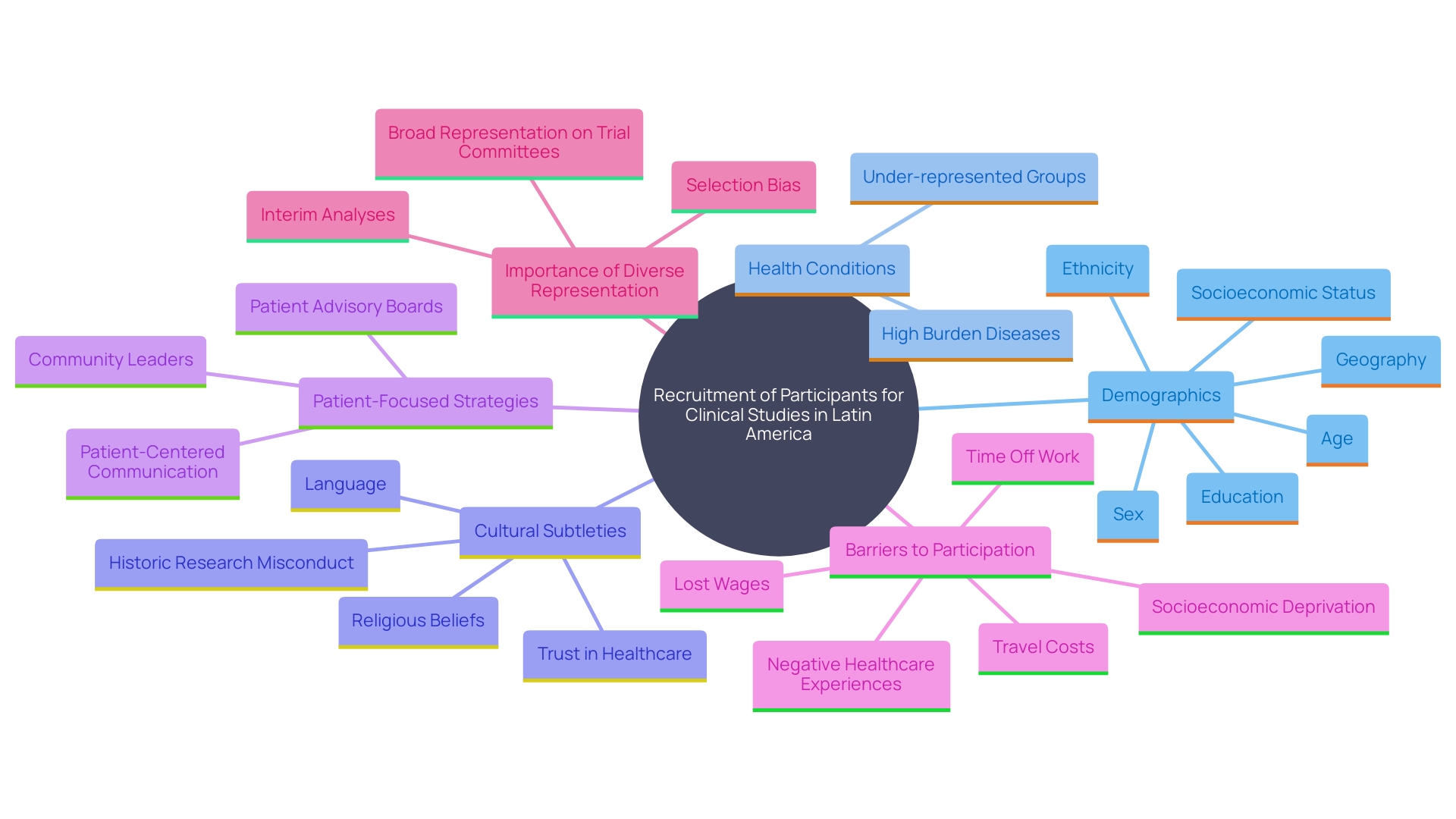
Leverage Healthcare Provider Referrals
Cultivating connections with nearby healthcare professionals is essential for improving participant enlistment in clinical studies. Doctors and experts, with their vast patient connections, can serve as essential referral resources, providing insights into suitable patients and supporting the trustworthiness of the study. Using national datasets, like those from NHS Digital and the Office for National Statistics, can assist in pinpointing potential hiring locations. These datasets take into account health status, socio-economic factors, and ethnicity, ensuring inclusivity and diversity in participation. The use of digital tools like pre-screening forms and site finders enables patients to take immediate steps toward participation, facilitating engagement and expediting the recruitment process. 'According to the WHO, improving the diversity of study participants ensures that research benefits a broader range of people, moving away from a one-size-fits-all approach.'. This combined method not only improves patient-provider connections but also boosts the effectiveness and efficiency of medical studies.
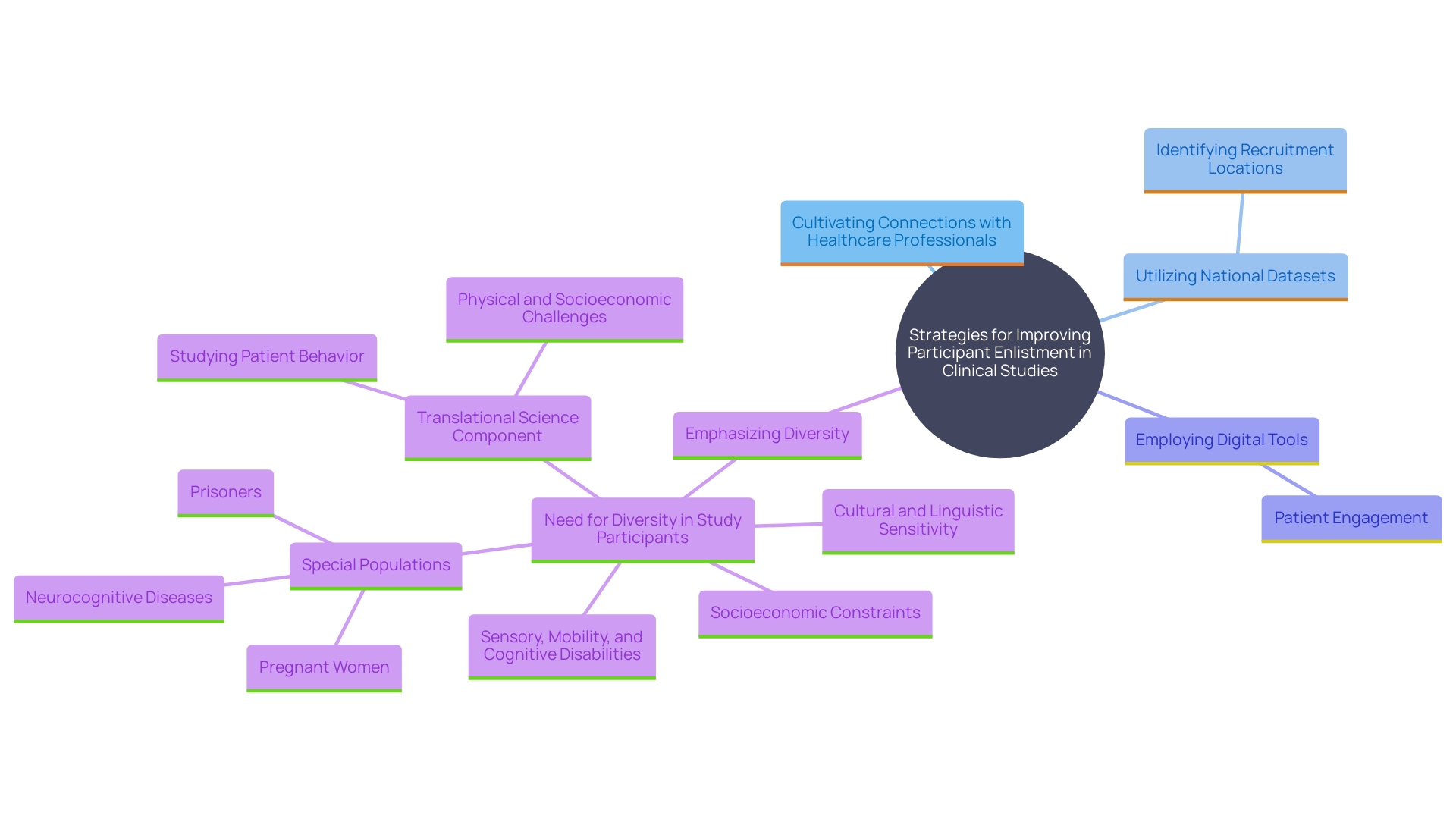
Utilize Digital Recruitment Campaigns
Using digital platforms such as social media, online ads, and specialized websites can greatly broaden your outreach for studies. Research indicates that Americans spend an average of seven hours a day online, with at least two of those hours on social media. This extensive usage makes social media an effective tool for disseminating public health information and engaging potential participants.
Research from the Brown University School of Public Health has indicated that influencers, who offer a genuine and relatable perspective, can effectively communicate life-saving information and promote involvement in medical studies. This approach is particularly effective when influencers represent high-priority and hard-to-reach audiences.
Moreover, digital and social media tools can be tailored for specific target audiences, are scalable, and can be disseminated at a low cost. This makes them an attainable approach for education, hiring, and retention in research studies. Developing focused campaigns that showcase the advantages of joining research studies, while tackling typical worries and inquiries, can further boost involvement and engagement.
Integrating these strategies into your hiring efforts can help address the challenges of enrolling participants, particularly in under-represented and underserved areas. By utilizing the strength of digital platforms, you can establish more inclusive, efficient, and effective research studies.
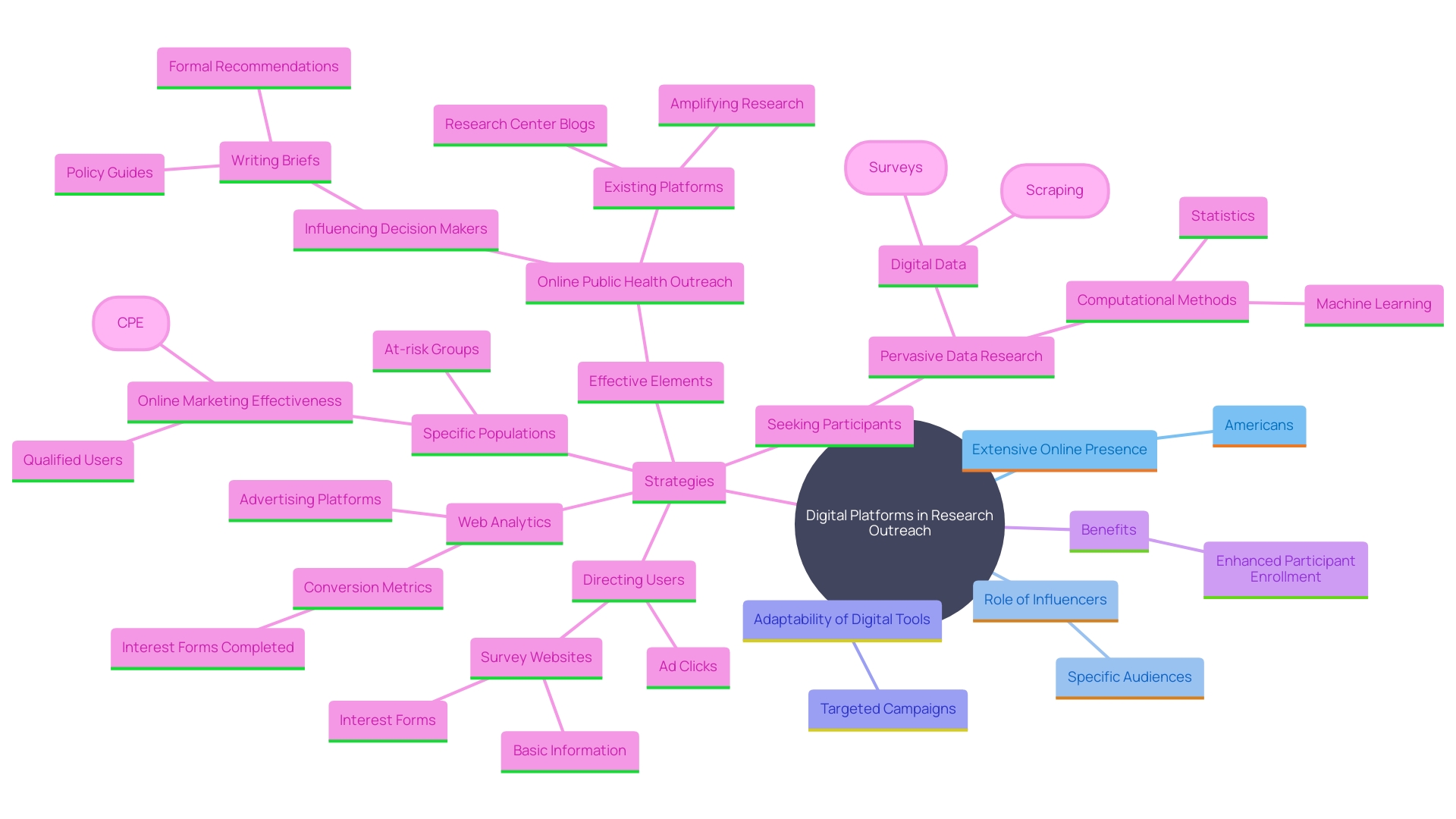
Offer Flexibility in Clinical Trials
Providing adaptable involvement choices can greatly improve participant recruitment for clinical trials, especially in underrepresented groups. Implementing various scheduling accommodations, such as evening and weekend appointments, and providing virtual visit options can help minimize barriers. A recent report by GlobalData highlighted the increasing use of remote health monitoring devices, which are expected to be worth $760 million by 2030. These technologies not only facilitate easier participation but also improve data collection and retention rates.
Eben Scanlon, Chief Customer Officer at OneStudyTeam, highlighted the significance of utilizing technology to involve individuals: 'Engagement is essential on multiple levels.'. It assists in informing updates to trial design and processes, ensures essential data is gathered to assess the safety and efficacy of an investigational product, and aids in maintaining participant engagement for the duration of the trial
Furthermore, texting has proven to be an effective method for maintaining communication and engagement with individuals. As noted, 'At a time when 90% of adults in the U.S. have a smartphone, texting is one of the quickest and most convenient ways to reach individuals with appointment reminders and any scheduling updates.' This method aids in decreasing the perceived load of participation, making it more feasible for individuals with diverse schedules and obligations.

Partner with Patient-Centric Recruitment Companies
Working together with specialized hiring agencies can significantly simplify the patient enrollment process. These firms often have extensive databases and established networks that enhance the identification and engagement of potential participants. Based on a recent study, merely 5% of the US population engages in clinical trials, and 80% of trials do not achieve participant goals, resulting in delays and higher expenses. This challenge is even more pronounced globally, particularly in countries with limited healthcare resources.
Moreover, recruitment firms are increasingly leveraging digital tools to bridge these gaps. Many biopharma sponsors are investing in trial-specific websites that provide comprehensive overviews of risks, benefits, and eligibility criteria. These platforms enable individuals to make informed choices and facilitate immediate engagement through digital pre-screening forms. This approach not only improves satisfaction for individuals but also accelerates their journey to treatment.
Daniel J Herron, Vice President of Digital Offerings at RWS, highlights the significance of patient-focused approaches in research studies. He observes that involving patients in the planning and design of studies ensures that their viewpoints and requirements are taken into account, making the information they receive simpler to grasp. This approach is crucial for surmounting geographical obstacles and language variations, ultimately enhancing the diversity and inclusiveness of research participants.
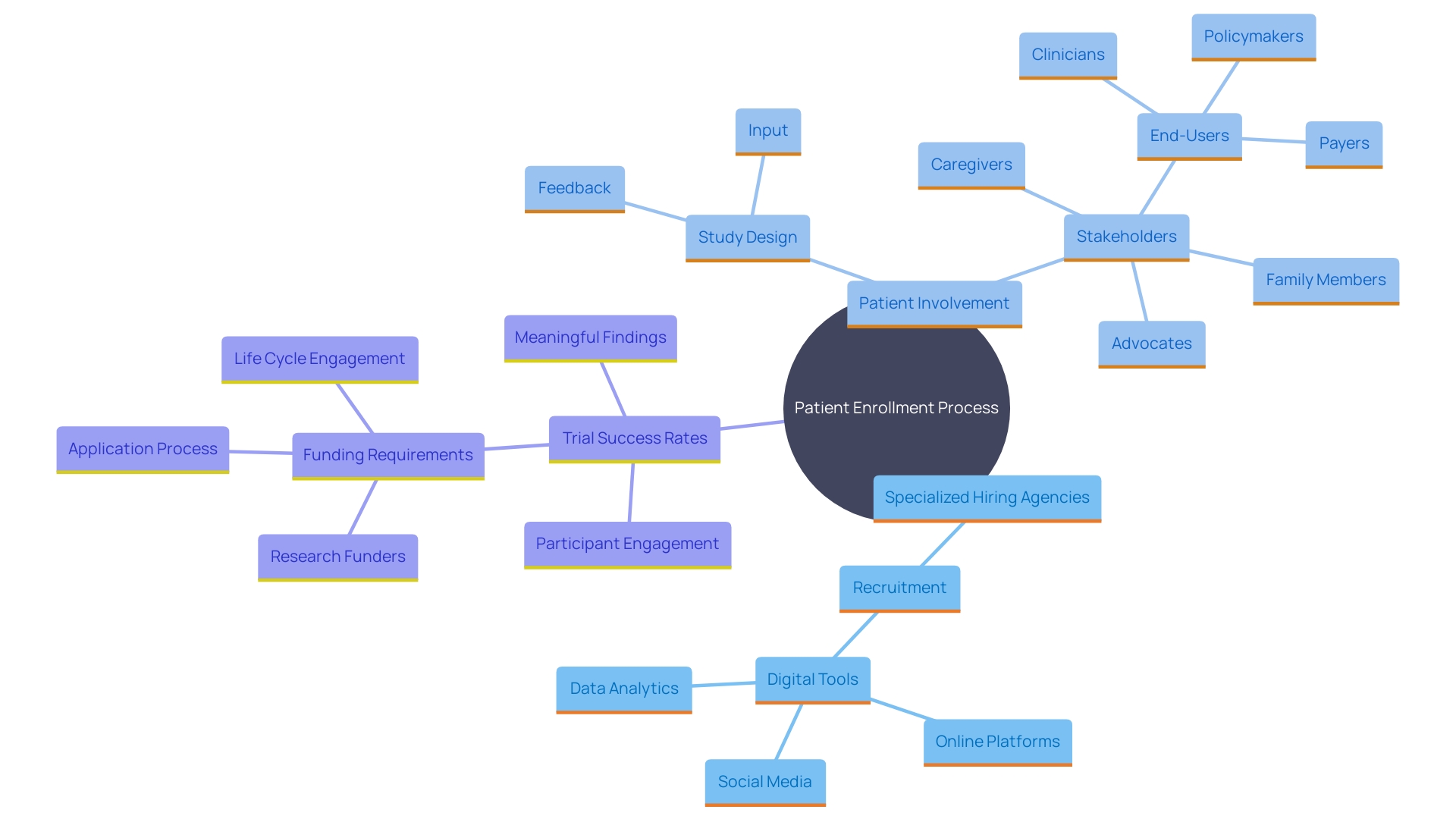
Implement Localized Lab Service Options
Collaborating with local laboratories can greatly improve access to essential lab services for clinical study participants, thereby lessening travel burdens. This strategy not only boosts convenience but also fosters higher participation rates, especially among individuals who might otherwise be deterred by logistical challenges. By collaborating with community hospitals, primary care providers, and rural health clinics, researchers can bring studies closer to participants. This approach ensures that participants are more likely to engage and adhere to the study protocols, as they can avoid unnecessary travel and time commitments. Moreover, leveraging electronic health records and other technologies for participant identification and data collection can further streamline the process, making it user-friendly and efficient.
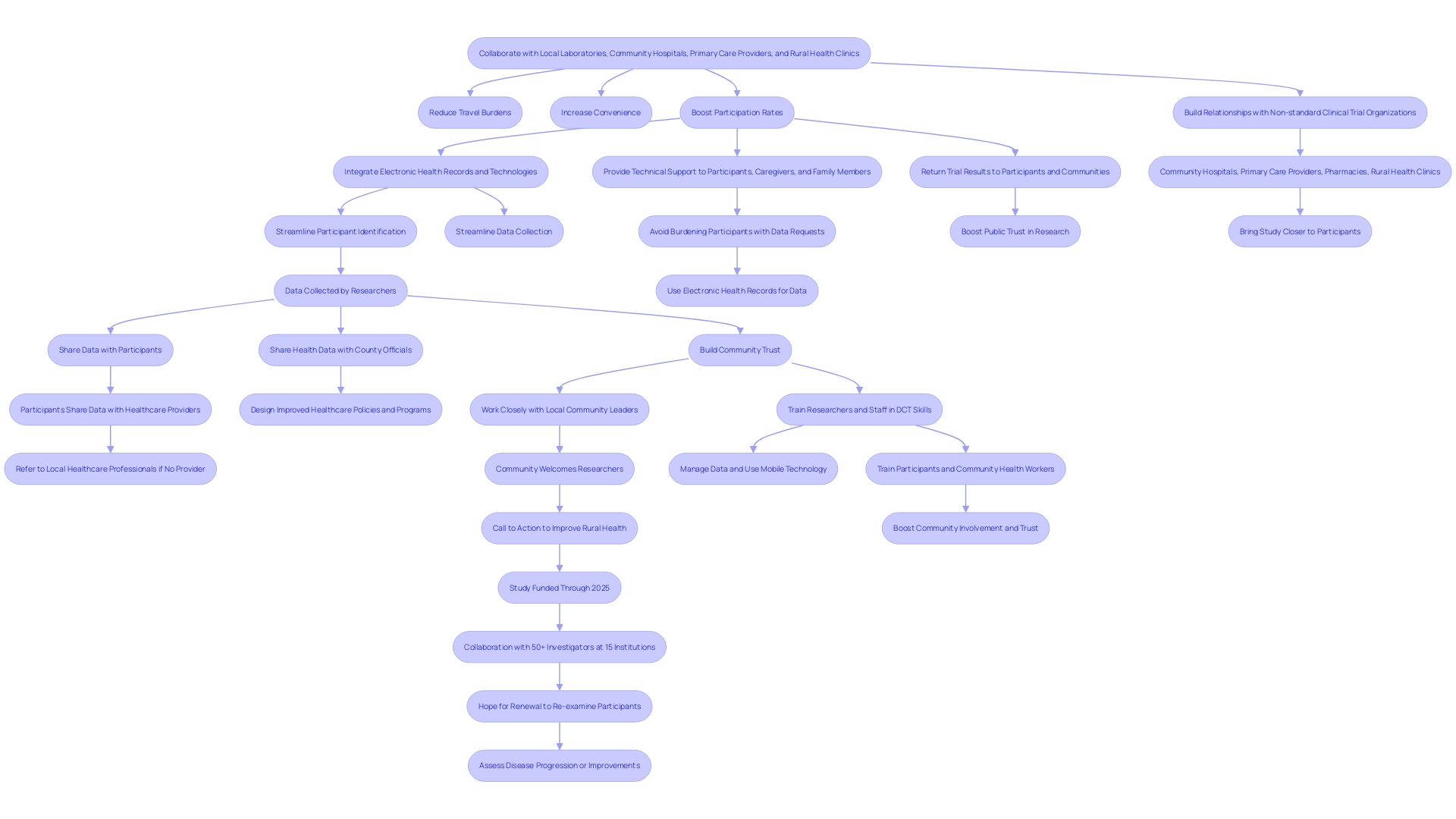
Screen for Multiple Trials Simultaneously
By employing a method that enables individuals to be evaluated for several studies at once, effectiveness in the enrollment process can be greatly enhanced. This approach increases the likelihood of enrollment by matching individuals to studies that best align with their specific health conditions. It's a multifaceted operational decision that includes considering the healthcare infrastructure and regulatory environments of the participating countries, as well as their marketing availability and drug distribution systems. Considering that approval rates have ranged from 5% to 15% over the past ten years, and studies frequently fail due to insufficient participant enrollment, this approach may be essential in addressing these obstacles.
Utilizing artificial intelligence (AI) in client pre-screening can further streamline this process. Dr. Alexander Blood from Brigham and Women's Hospital highlights that AI can accelerate clinical trial processes, making them cheaper and more equitable without sacrificing safety. This technology can accelerate the time required to assess the effectiveness of a therapy, thus improving outcomes for individuals.
For example, a hiring strategy involving multiple nations needs to consider hiring rates, costs, and patient limits specific to each country. In a recent study, each of the 49 countries involved had their own set of minimum and maximum allowable sites, enrollment rates, and cost constraints. This granular approach ensures a higher probability of success in hiring, set at a stringent 90%.
Furthermore, incorporating technology to facilitate involvement of individuals is essential. Robust involvement of individuals requires active participation from the selection stage through to the treatment phase. This involvement aids in guaranteeing essential information is gathered to assess the safety and effectiveness of experimental products, ultimately assisting in participant retention for the length of the study.
In conclusion, a plan that incorporates concurrent evaluations for various studies and utilizes AI can greatly improve the effectiveness and success rates of patient enrollment in research. By addressing these operational challenges and integrating innovative technologies, research in healthcare can become more agile, inclusive, and effective.

Prioritize Patient Retention Strategies
'Maintaining participant engagement throughout a clinical study is crucial, requiring the implementation of effective retention strategies.'. 'The dedication of individuals, especially in Phase 3 studies, is significant, with an average of 18 to 20 visits and 34 to 38 procedures (Tufts Center for the Study of Drug Development).'. Recognizing this effort, it is essential to acknowledge their contributions and ensure they feel valued.
Regular follow-ups are a fundamental component of retention, helping to sustain participants' interest and involvement. A study by the Multi-Regional Clinical Trials Center of Brigham and Women’s Hospital and Harvard highlights the importance of consistent communication, showing that patients appreciate updates on research progress. This approach not only keeps them informed but also reinforces their role as active partners in the research.
Giving information about study progress satisfies participants' inherent curiosity regarding their health and the results of the research they endorse. According to the NASEM Report, many participants expect to receive personal results, which can enhance their engagement and satisfaction. Transparency in sharing research findings promotes accountability and builds trust between researchers and participants.
Moreover, utilizing modern communication methods, such as text messaging, can significantly improve retention. With 90% of adults in the U.S. owning a smartphone, texting is an efficient way to send appointment reminders and updates. This method was effectively demonstrated in a test where different text message interventions, including optimized messages and chatbot interactions, showed significant influence on participant engagement and satisfaction.
Incorporating these strategies into clinical trials can lead to better retention rates, ensuring that the valuable contributions of patient volunteers are honored and their involvement sustained throughout the study.
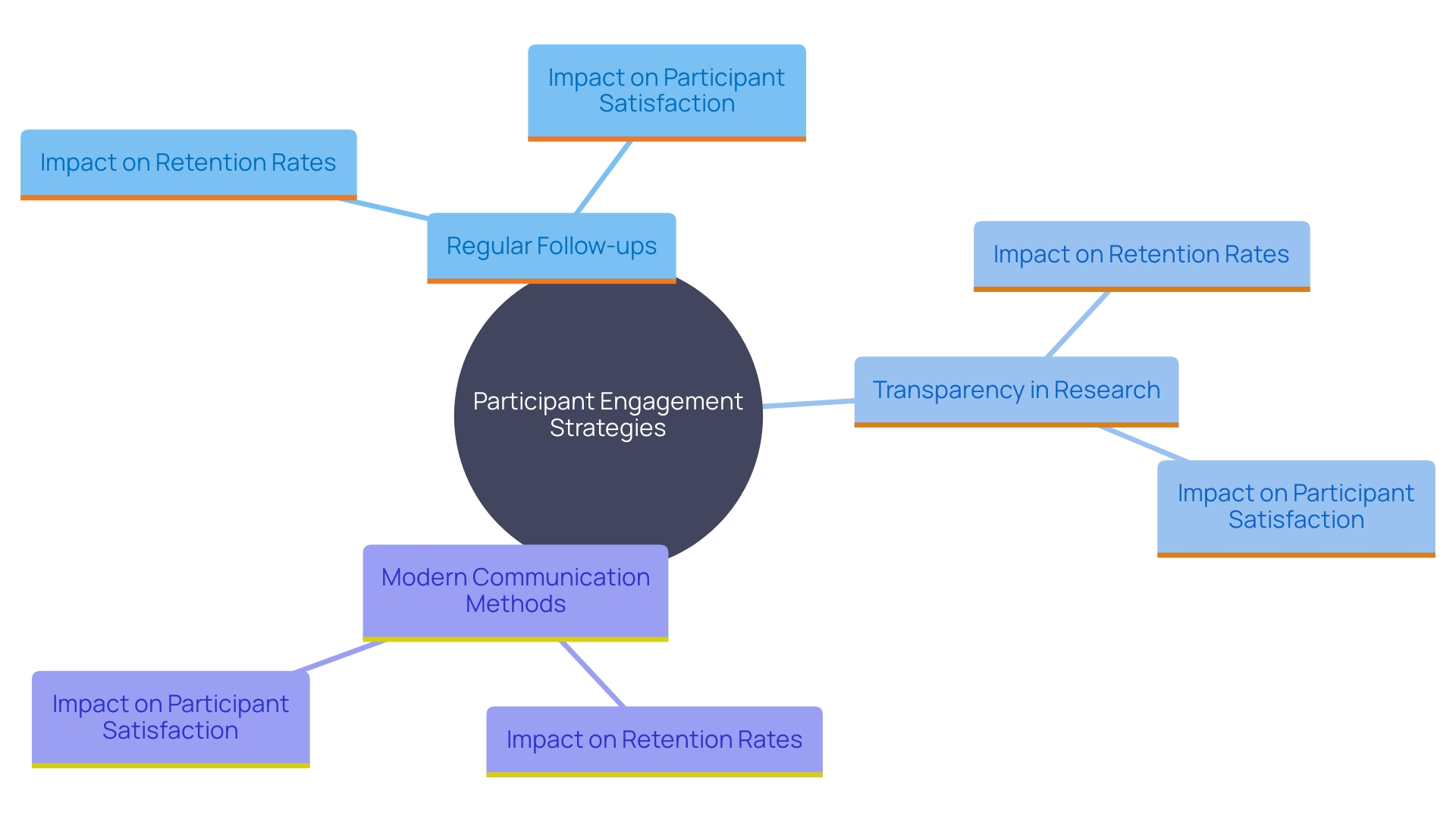
Conclusion
Effective patient recruitment for clinical trials in Latin America hinges on understanding the target population's demographics, health conditions, and cultural nuances. Tailoring outreach strategies to resonate with potential participants enhances recruitment success while promoting diverse representation, which is critical for the validity of medical research.
Utilizing healthcare provider referrals and digital recruitment campaigns expands outreach, particularly among underrepresented groups. Strong partnerships with local healthcare providers and the strategic use of digital platforms can significantly enhance engagement. Additionally, offering flexible participation options helps remove barriers, making trials more accessible to patients with diverse schedules.
Collaborating with patient-centric recruitment firms and utilizing localized lab services streamline the recruitment process, addressing logistical challenges that may deter participation. Screening patients for multiple trials simultaneously improves efficiency and aligns participants with suitable studies, addressing the common issue of inadequate recruitment.
Maintaining participant engagement through regular communication and transparency is essential for retention. Providing updates on trial progress fosters a sense of partnership, enhancing the overall participant experience. Modern communication methods, such as text messaging, can further improve retention rates, ensuring that patient contributions are honored throughout the study.
In summary, a holistic approach that combines an understanding of patient populations, the use of technology, and strong relationships with healthcare providers is crucial for successful clinical trial recruitment in Latin America, ultimately advancing public health and medical research.




